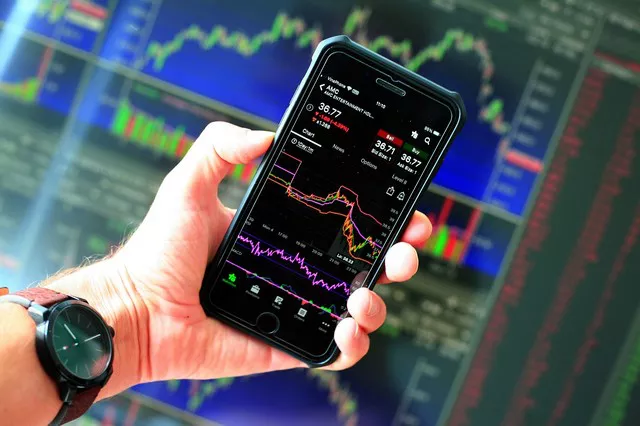In the world of commodities trading, live cattle futures play a significant role in both agricultural markets and the broader global economy. These futures contracts are financial instruments that allow traders to speculate on the future price of live cattle, which are an essential component of the livestock industry.
Live Cattle Futures Explained
Live cattle futures are standardized contracts traded on commodity exchanges that enable market participants to buy or sell a specific quantity of live cattle at a predetermined price on a future date. These contracts serve as a risk management tool for both cattle producers and meat processors, as well as a means for investors and speculators to gain exposure to the cattle market without physically owning cattle.
How Live Cattle Futures Work
Contract Specifications:
Each live cattle futures contract typically represents 40,000 pounds of 55% Choice, 45% Select grade live cattle.
The contracts have standardized delivery months, including February, April, June, August, October, and December.
Prices are quoted in cents per pound, with a minimum tick size (price increment) of 0.025 cents, equivalent to $10 per contract.
Market Participants:
Hedgers: Cattle producers and meat processors use live cattle futures to hedge against price fluctuations. For example, a cattle rancher may use futures contracts to lock in a price for their cattle months in advance, ensuring a stable income regardless of market volatility.
Speculators: Traders who do not have a direct interest in the cattle industry can speculate on the future price movements of live cattle to profit from price changes.
Arbitrageurs: Some traders engage in arbitrage by simultaneously buying and selling live cattle futures on different exchanges or in different months to exploit price differentials.
Settlement:
Most live cattle futures contracts are cash-settled, meaning that no actual physical delivery of cattle takes place. Instead, the contract’s value is settled in cash based on the difference between the contract price and the market price at expiration.
Physical delivery can occur in some situations, but it is relatively rare and requires specific arrangements between the buyer and seller.
Factors Influencing Live Cattle Futures Prices
Several factors influence the price of live cattle futures, making them subject to volatility:
Supply and Demand: The most significant factor affecting cattle futures prices is the balance between supply and demand. Changes in cattle inventories, herd sizes, and consumer preferences can impact prices.
Weather Conditions: Extreme weather events such as droughts or severe winters can affect cattle feed availability and health, leading to supply disruptions and price fluctuations.
Feed Costs: The cost of cattle feed, which is primarily composed of grains, has a direct impact on the profitability of cattle ranchers. Changes in grain prices can influence cattle futures.
Economic Indicators: Economic indicators, such as unemployment rates and consumer spending, can affect the demand for beef products. A strong economy typically leads to increased demand for beef.
Government Policies: Government regulations, subsidies, and trade agreements can significantly impact the cattle industry, affecting supply and demand dynamics.
Currency Exchange Rates: The value of the U.S. dollar relative to other currencies can influence cattle exports and imports, affecting supply and demand.
Trading Live Cattle Futures: Risks and Benefits
Trading live cattle futures offers several benefits and risks for market participants:
Benefits:
Risk Management: Producers can use futures contracts to hedge against adverse price movements, protecting their income and reducing financial risks.
Price Discovery: The futures market serves as a price discovery mechanism, reflecting the collective market sentiment about future cattle prices.
Liquidity: Live cattle futures are actively traded, providing liquidity and allowing traders to enter and exit positions relatively easily.
Risks:
Price Volatility: The cattle futures market can experience significant price swings, which can lead to substantial gains or losses for traders.
Margin Calls: Futures trading requires participants to maintain a margin account, and significant price movements can result in margin calls, requiring additional capital.
Lack of Physical Ownership: Unlike owning physical cattle, futures contracts do not grant ownership of the underlying asset, limiting the ability to benefit from physical cattle price increases.
Knowledge and Expertise: Successful trading in the live cattle futures market requires a deep understanding of the cattle industry, market trends, and trading strategies.
Using Live Cattle Futures in Investment Portfolios
While live cattle futures are primarily used by industry participants for hedging and risk management, some investors incorporate commodity futures, including cattle, into their investment portfolios for diversification and potential returns.
Investors interested in including live cattle futures should consider the following:
Diversification: Commodity futures, including live cattle, can provide diversification benefits by having a low correlation with traditional asset classes like stocks and bonds.
Risk Management: Be aware that investing in futures carries risks, and it’s crucial to understand how futures work, the potential for losses, and the costs associated with trading.
Professional Guidance: Consider seeking guidance from a financial advisor or commodity trading expert to navigate the complexities of futures trading.
Risk Tolerance: Assess your risk tolerance carefully, as commodity futures can be volatile and may not be suitable for all investors.
Conclusion
Live cattle futures are essential financial instruments within the commodities market, serving as a vital tool for risk management in the cattle industry and offering trading opportunities for speculators and investors. Understanding how live cattle futures work, the factors influencing their prices, and the risks and benefits associated with trading them is crucial for anyone looking to engage in this market. Whether used as a risk management tool or a potential investment, live cattle futures play a significant role in the global agricultural and financial landscape.


